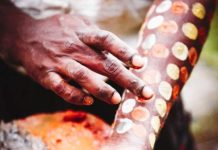The History of Kalapuya Tribe
The Kalapuyas (or Calapooyas or Calapooias) are one of eight tribes that belong to the Kalapuyan phylum. Kalapuya, or ka-la-POO-ya, is sometimes used to describe all eight Kalapuyan tribes. West of the Cascade Mountains, in present-day western Oregon, the Kalapuyans inhabited the fertile Willamette Valley.
The Kalapuyans are classified among Northwest Coast Indians. Still, as they lived inland, they shared cultural traits with the plateau Indians to the east, especially their preference for gathering wild plant foods, such as camas roots, and supplementing their diet with fishing and hunting. Tobacco was planted in rotten, burned logs to prepare them for planting.

Furthermore, tribal members lived in multifamily houses made of wood, bark, thatch, and earth during the winter and temporary structures made of boughs and grass during the summer. In the Kalapuyan culture, dentalia and olivella shells were used as a medium of exchange. To gain Spirit power or dream power, they carried out vision quests.
Kalapuya and other tribes were decimated by disease. Non-Indians brought smallpox to the region in 1782–83 through other tribes. Despite hearing about “Calahpoewah villages” along the Multomah (Willamette River), the Lewis and Clark Expedition did not have direct contact with any Kalapuyan tribes. In 1812, Trader Donald McKenzie led a group of Pacific Fur Company traders through the Willamette Valley and made the first recorded contact between Kalapuya tribes and non-Indians. In 1830–33, a deadly epidemic spread among the Kalapuyans after contact with a trading ship among Columbia River tribes.
There was little protection for Kalapuyans from non-Indian settlers in the Willamette Valley after a series of treaties were signed in 1851. Alquema, a Santiam chief, told U.S. officials that he was willing to throw away the rest of his country and reserve the land between the two Santiam forks. That was too much for you! Once that was agreed upon, we agreed to take only half and take in the people south of us if they were willing to do so. That was too much for you! We then decided to take this small piece between the creek and the north branch. It is still your wish that we take less. There is no way we can do it. We are confined to a small space.
The government of the United States began relocating tribes far to the northeast of their ancestral lands in 1855–56, launching the Removal Policy. During the 1870s, Kalapuyans in Grande Ronde began practicing an early form of the Ghost Dance, which was developed among the PAIUTE by the Wodziwob, who predicted the return of deceased ancestors. Some Kalapuyans of the Confederated Tribes of the Grande Ronde Community of Oregon, which includes CHINOOK and other peoples, have been successful in fulfilling Wodziwob’s prophecy about reclaiming traditional values and crafts.
The Kalapuya proper lived at the headwaters of the Willamette River; the Ahantchuyuk, on the Pudding River; the Atfalati (or Tualatin), in Forest Grove; the Chelamela west of Eugene; the Chepenafa (or Mary’s River) near present-day Corvalis; the Luckiamute (or Lakmiut), on the Luckiamute River; the Santiam, on the Santiam River; the Yamel (or Yamhill) near present-day McMinnville; and the Umpqua River, called Yoncalla (or Yonkalla). There were also bands known by other names within these groups.
Read More: The Epic Battle of Liegnitz 1241







